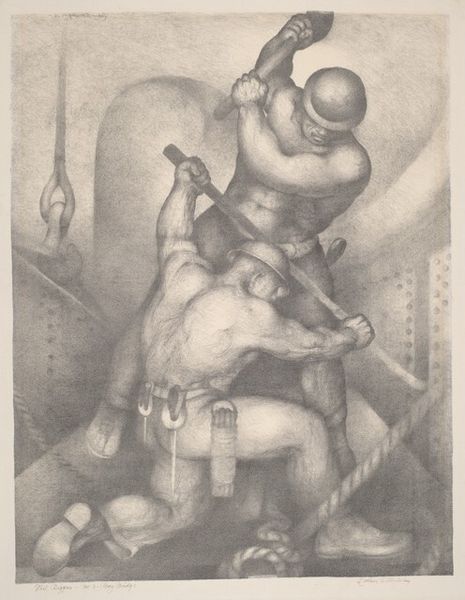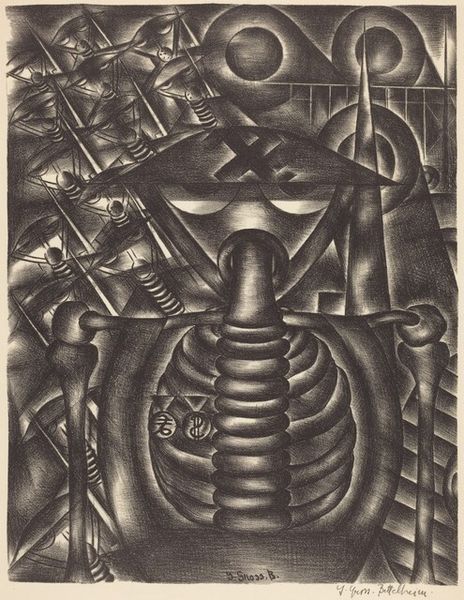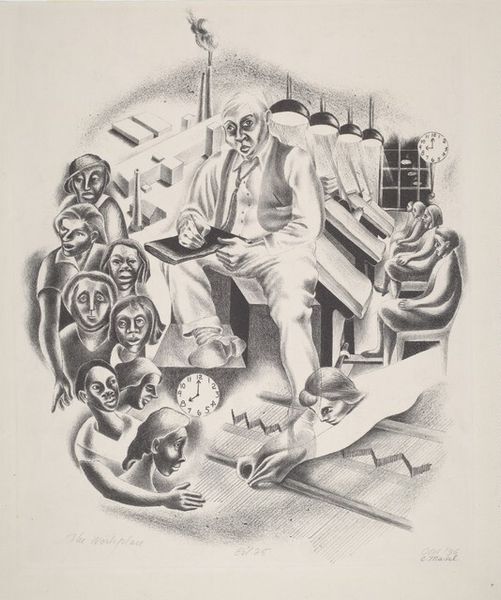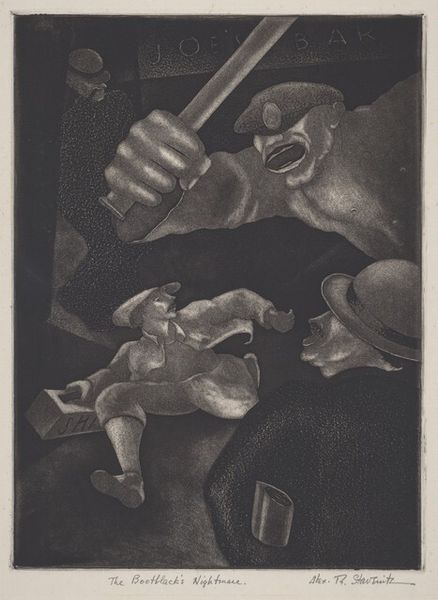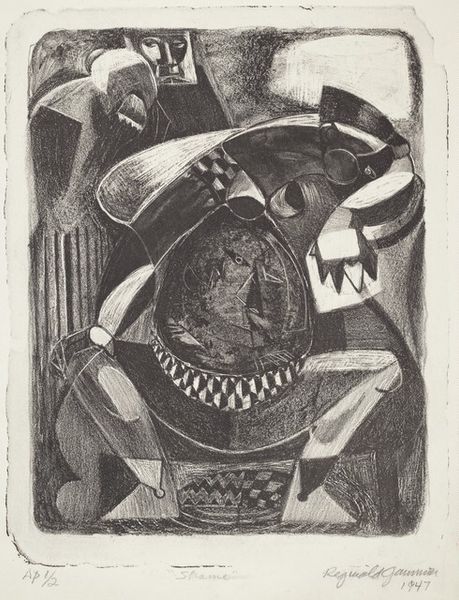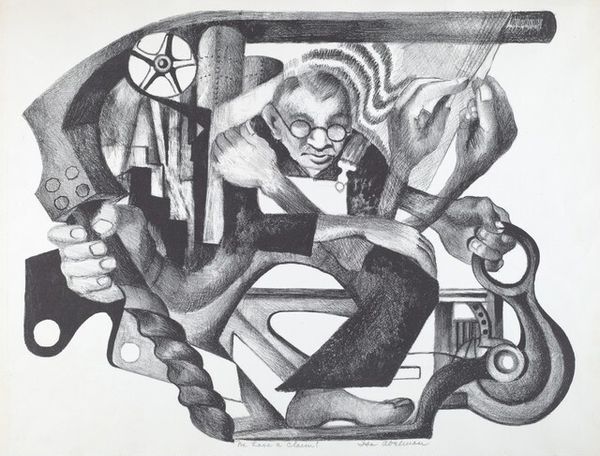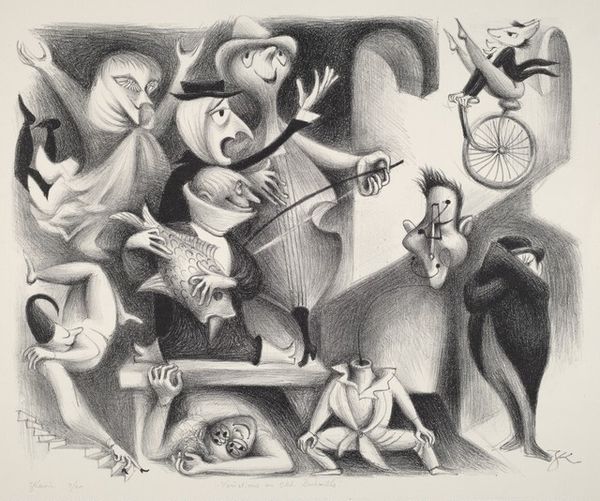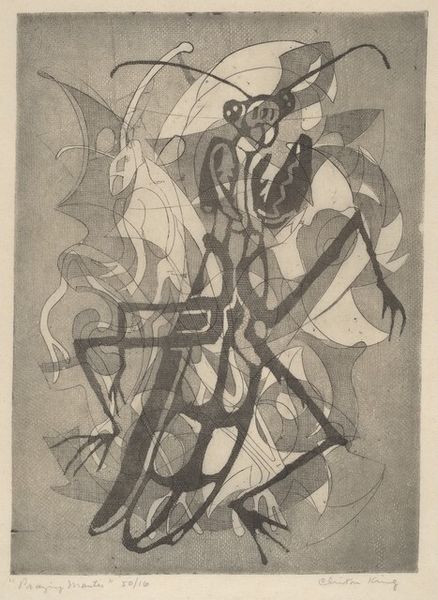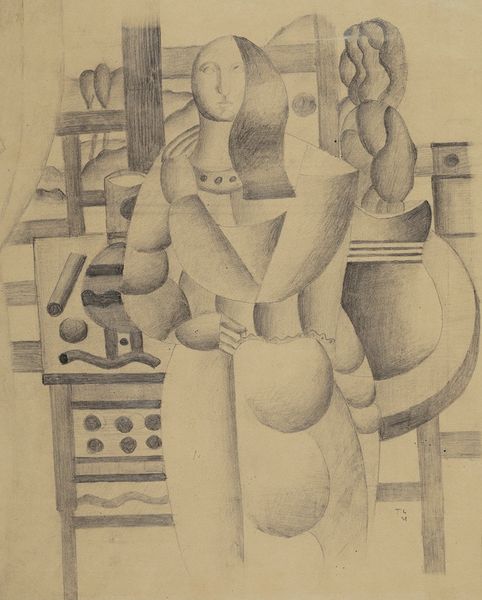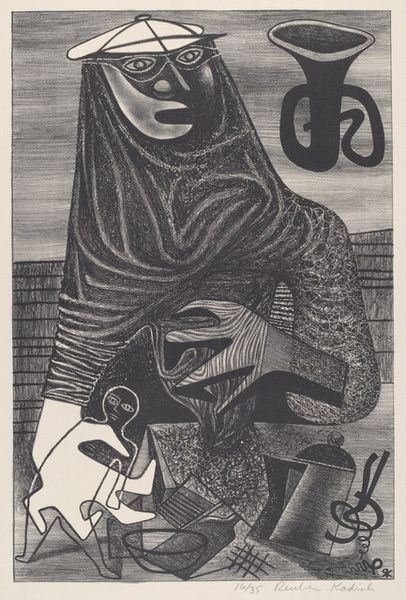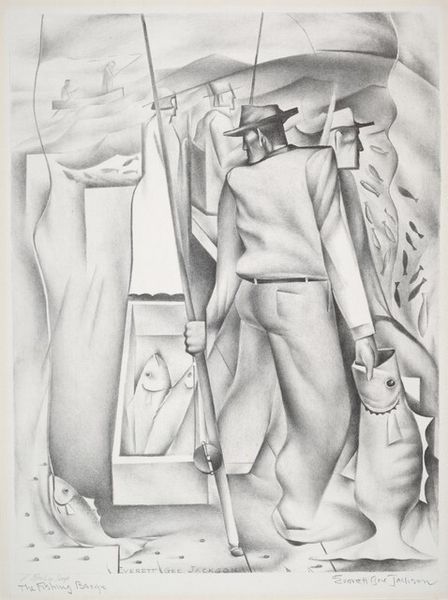
drawing, print, pencil
#
portrait
#
drawing
# print
#
caricature
#
figuration
#
pencil drawing
#
pencil
#
portrait drawing
#
realism
Dimensions: image: 356 x 305 mm sheet: 521 x 355 mm
Copyright: National Gallery of Art: CC0 1.0
Curator: Before us is John Charles Haley’s pencil drawing, "Torchbearer," created around 1935. What are your initial thoughts on it? Editor: Well, it’s quite striking. The angularity of the figure, the industrial backdrop – it feels very much like a product of its time, capturing the grit and strength of the working class. I immediately think of social realism. Curator: Yes, and Haley's use of realism is tempered with a sense of idealized form, isn't it? The way he simplifies shapes into almost geometric patterns adds a layer of stylization. Observe the man's hands, how they cradle the torch equipment, the cylindrical object next to it – notice also the details of his glasses and hat, all contributing to a cohesive composition of interlocking shapes. Editor: And look at the heavy chain looped around the bottom of the frame. Its weight is palpable, isn't it? Symbolically, I wonder about the chain’s purpose—suggesting the constraints of labor or the connection between industrial processes and human effort? Given the context, I am leaning toward the social conditions for workers. Curator: The repetition of circular and cylindrical forms, as you noted in the lenses, really drives home the repetitive, almost cyclical nature of industrial work, I think. It’s about more than realism. It is structuralist because Haley deconstructs the scene, portraying a semiotic framework about production with simple elements. The lines create depth and dimension—how would you assess the labor put into making this image? Editor: Enormous! It must have taken considerable skill and time to render such details by using pencil – it is clear Haley was immersed in and observant of workshop floors and production. And his skill is apparent through the layering that he achieved through graphite which gives a strong aesthetic element of the hard conditions that shape this work. Curator: I find it intriguing how Haley doesn’t romanticize or vilify the subject, allowing us to observe without imposing judgment, despite any symbolic meaning—which in the end leaves room for multiple readings. Editor: It invites us to reconsider our own relationship with production and craftsmanship. Curator: An insightful reading that acknowledges Haley's capacity to challenge convention while celebrating an idealized moment in American industrial labor.
Comments
No comments
Be the first to comment and join the conversation on the ultimate creative platform.
